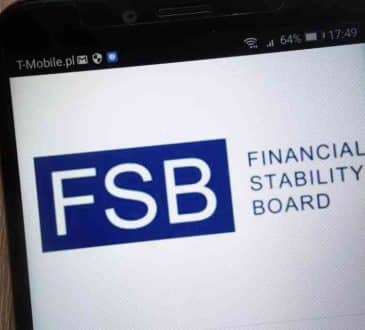Strategic Communication: a crucial area of consulting

Strategic Communication is a process that organizations use to intentionally manage the relationships between them and their key publics. The goal of Strategic Communication is to influence how these publics think, feel, and behave toward the organization and its mission. Organizations use a variety of communication strategies to achieve their desired outcomes with key publics. The strategies used will vary depending on the nature of the organization and its relationships with its publics. Some common communication strategies used in Strategic Communication include:
- Developing and maintaining relationships with key publics.
- Creating and disseminating messages that are aligned with the organization’s goals.
- Monitoring and evaluating the impact of communication strategies.
To do this, organizations first need to understand their publics: what they care about, what their needs are, and what motivates them. With this understanding, organizations can develop messages that resonate with their publics and then use the most effective channels to reach them. A related guide could include features tips and resources on:
- Analyzing publics creating narratives.
- Developing messages.
- Testing messages.
- Developing and executing communication plans.
- Working with the media influencers and partners.
What are the Core Goals of Strategic Communication?
The core goals of Strategic Communication are to build relationships, manage change, and achieve organizational objectives. In order to build relationships, organizations must first understand their audiences and then craft messages that appeal to them. In order to manage change organizations must be able to effectively communicate their goals and objectives to their audiences. Finally, in order to achieve organizational objectives Strategic Communication must be able to influence the behavior of its audience.
In order to manage change, organizations must be able to effectively communicate both the reasons for change and the steps that need to be taken. Lastly, in order to achieve organizational objectives, organizations must be able to align their communication strategies with their overall business goals. In conclusion, the three primary types of organizational communication are intrapersonal communication, interpersonal communication, and mass communication. Each type of communication has its own unique purpose and goals. In order for organizations to be successful, they must be able to effectively utilize all three types of communication in order to manage change communicate effectively, and achieve their business goals.
How Does Strategic Communication Help Your Organization Reach its Goals?
Strategic Communication is the process of aligning all of an organization’s communication activities with its business goals. It involves developing a clear understanding of the organization’s mission, values, target audiences, and key messages, and then designing and implementing communication plans and programs that support the achievement of those goals. The first step in Strategic Communication is to develop a clear understanding of the organization’s mission values target audiences and key messages. This understanding will help to ensure that all communication activities are aligned with the organization’s business goals.
Once the organization’s key messages have been developed the next step is to design and implement communication plans and programs that support the achievement of those goals. Communication plans and programs should be designed to reach the organization’s target audiences with the most effective messages possible. Strategic Communication is an ongoing process and it is important to evaluate the effectiveness of the communication plans and programs on a regular basis. By doing so, the organization can make the necessary adjustments to ensure that its communication activities are having the desired impact.
An effective Strategic Communication program can help an organization to:
- Increase sales and market share.
- Enhance customer satisfaction and loyalty.
- Attract and retain top talent.
- Improve employee engagement.
- Increase efficiency and productivity.
- Reduce costs.
- Mitigate risk.
What Are Some Best Practices in Developing a Strategic Communications Plan?
There is no one-size-fits-all answer to this question, as the best practices in developing a strategic communications plan will vary depending on the specific goals and objectives of the organization. However, some general best practices that can be followed when developing a strategic communications plan include:
- Defining the target audience: The first step in any communications strategy is to clearly define the target audience. This will help to ensure that all communications efforts are focused on the right people and that the message is delivered in a way that resonates with the audience.
- Establishing clear objectives: The next step is to establish clear objectives for the communications strategy. Without a clear goal, it will be difficult to measure the success of communications efforts.
- Identifying key messages: Once the target audience and objectives have been established the next step is to identify the key messages that need to be communicated. These messages should be concise and to the point and should be aligned with the overall objectives of the organization.
- Developing a plan of action: Once the key messages have been identified the next step is to develop a plan of action for how these messages will be communicated. This plan should detail the specific channels that will be utilized to communicate within this loyalty program.
In addition, our multichannel plan outlines how we will communicate key marketing messaging to program members on each channel in order to capitalize on the strengths of the channel and maximize the different benefits the loyalty program can provide. The three primary methods of communication that we will be utilizing are: email, SMS, and in-app notifications.
- Email: Email is the most efficient means of mass communication and allows us to reach the greatest number of people with the least amount of effort. Email also allows us to include more complex messaging and media than either SMS or in-app notifications.
- SMS: SMS is a more personal form of communication that allows us to reach our customers on a one-to-one basis. SMS also has the advantage of being nearly instantaneous, which is important for time-sensitive messages.
- In-App Notifications: In-App notifications are a great way to reach our customers since they are already inside the app. You can use them to promote updates or launches and make ads that are a part of the messaging as well. In-app notifications simply stop the user from working on the app and divert their attention to the message.
Consequently, the key mechanisms of a Strategic Communications plan should be:
- Defining the organization’s core messages and values, and ensuring that all communications efforts are aligned with these.
- Conducting extensive research to understand the needs and concerns of the organization’s target audiences, and tailoring communications accordingly.
- Developing clear and measurable objectives for the communications plan, and selecting tactics and channels that are most likely to help achieve these objectives.
- Regularly evaluate the effectiveness of the communications plan and make adjustments as necessary to ensure that it remains relevant and effective.
How You Can Benefit from Releasing a Strategic Communications Plan?
Releasing a strategic communications plan can be an excellent way to improve your organization’s public image and relationships with key stakeholders. There are a number of things to consider when releasing a strategic communications plan. First, it is important to decide what goals you hope to achieve with the plan. Next, you need to determine what key messages you want to communicate. Once you have these two elements in place, you can begin to develop your communications strategy.
It is also important to consider who your target audience is when developing your communications plan. You will need to tailor your messages and approach to fit the needs of your specific audience. In addition, you need to consider what channels you will use to communicate your messages. Will you use traditional media outlets such as television and radio? Or will you use more modern channels such as social media? Finally, you need to consider how you will measure the success of your communications plan. This will help you determine whether or not the plan is achieving its intended results.
A well-crafted plan will help you focus your communications efforts, allocate resources effectively, and measure progress over time. In addition, releasing your plan can generate goodwill and trust among your stakeholders by demonstrating your commitment to transparent and effective communication. There are six steps to creating a communication plan… What do you say? Do you remember them? Let’s see…
Written by Fotis Pantopoulos.
Have you read?
Best Business Schools In The World For 2022.
Best Fashion Schools In The World For 2022.
Best Hospitality And Hotel Management Schools In The World For 2022.
Best Medical Schools In The World For 2022.
The World’s Best Universities For Doctor of Business Administration (DBA), 2022.
Add CEOWORLD magazine to your Google News feed.
Follow CEOWORLD magazine headlines on: Google News, LinkedIn, Twitter, and Facebook.
Copyright 2024 The CEOWORLD magazine. All rights reserved. This material (and any extract from it) must not be copied, redistributed or placed on any website, without CEOWORLD magazine' prior written consent. For media queries, please contact: info@ceoworld.biz










